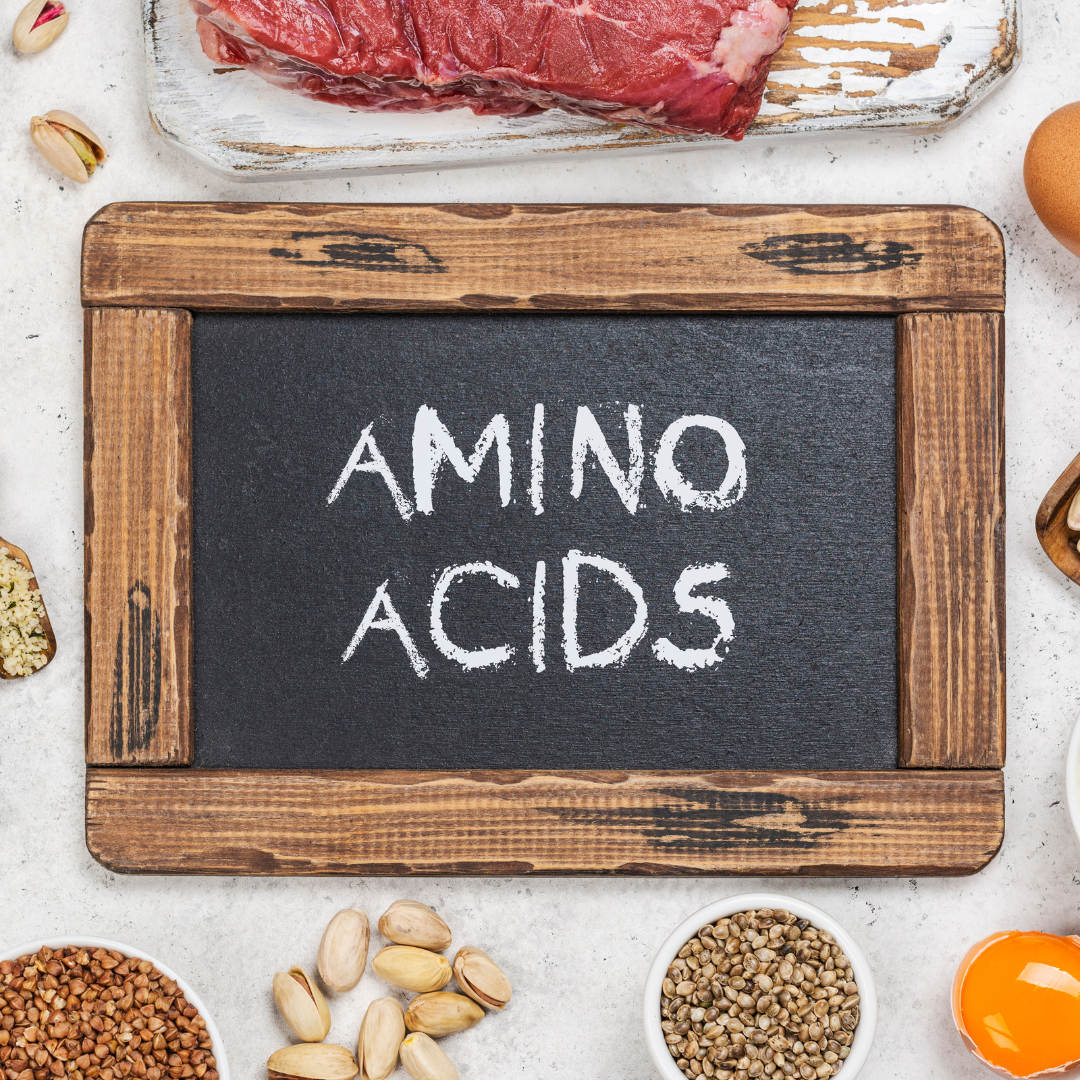Amino acids are the building blocks of proteins. These protein molecules are different than the protein you eat in your diet, but are the found in the protein you consume. We need 20 different amino acids to function properly – nine …
WHAT ARE AMINO ACIDS?
Amino acids are the building blocks of proteins. These protein molecules are different than the protein you eat in your diet, but are the found in the protein you consume. We need 20 different amino acids to function properly – nine of which are essential, meaning we need to get them from the food we eat. The essential amino acids are found in animal products primarily (& abundantly) and need to be consumed daily. Our body is able to manufacture the remaining 11 non-essential amino acids – as long as we have the right building blocks, enzymes, and cofactors.
When amino acids link together to form chains and become proteins, they are now able to perform various vital functions of the body. We have thousands of different protein sequences, each responsible for a specific job in our body.
Amino acids help our body with the following processes:
-
Break down food
-
Keep our digestive system operating smoothly
-
Build muscles
-
Keep our immune system healthy
-
Make hormones
-
Keep neurotransmitters working well
-
Maintain healthy skin, hair and nails
-
Repair our body’s tissues
HOW DO YOU GET AMINO ACIDS?
Eating a nutrient dense diet, limiting preservatives and sugar helps ensure we have the enough of the building materials to make the non-essential amino acids. But there are a few important details to getting those essential amino acids in the right amounts. This is where quantity matters. Most people do not eat enough animal protein throughout the day to meet this prerequisite. Skip to the bottom for details on how much animal protein we really need.
The best way to get all nine essential amino acids is through animal products.
Did I already say that? Yep!
It’s that important to repeat. Animal protein. Animal protein. ANIMAL PROTEIN!
WHAT ABOUT PLANT SOURCES OF PROTEIN?
Plant sources individually are unable to provide the complete amino acid profile that animal products are able to provide. This is why plant sources are considered ‘incomplete’. Yes, it’s true if you combine several plant sources, you can get the full panel of amino acids – but it will be at a cost. Blending several plant sources of amino acids have the potential to increase carbohydrate load and caloric load significantly.
The beauty of animal sources of protein is all the essential amino acids are present and ready for use without the extra calories or carbohydrates (and resulting blood sugar regulation problems). Animal protein is very self-limiting and satiating. You really can’t overeat animal protein. Plant protein on the other hand is easier to overeat because of the nature of carbohydrates. Carbs are not nearly as satiating as animal protein. Even starchy carbs like root veggies.
Let’s bust another myth while we’re here: “Animals get their proteins from plants, so it’s the same.” or “Plants use the same 20 amino acids, so it’s the same”. UGH! No, it’s not the same – not even remotely! Without going into a deep dive, I like to pose a few questions to you:
-
How many stomachs do you have?
-
How long is your small intestine vs large intestine?
-
Do you get your main source of energy from photosynthesis (creating energy from the sun by using chlorophyll)?
Quick answers: You have 1 stomach (ruminants have multiple – to process plant matter). Your small intestine is roughly 3 times the length of your large intestine (basically the opposite of gorillas). No – we do not use photosynthesis.
These are the three main arguments for the pro-plant only diet advocates. For more details about why animal products are superior in so many ways read Sacred Cow.
Back to the facts about amino acids.
20 total amino acids are required for functioning:
-
9 essential amino acids (we must get them from our food)
-
Phenylalanine
-
Valine
-
Tryptophan
-
Threonine
-
Isoleucine
-
Methionine
-
Histidine
-
Leucine
-
Lysine
-
-
11 non-essential amino acids (our body can make them when given the right circumstances)
Some non-essential amino acids need additional supplementation during times of illness or unrelenting stress. Be careful, randomly supplementing with amino acids prior to testing can do more harm than good. This is true of any supplement.
Supplements are meant to fill the gaps, not be a standard replacement, in the presence of a robustly healthy diet. There are always exceptions to this guideline, but don’t assume you are the exception.
Eating a nutrient-dense whole foods diet with enough animal protein for your needs/goals is the first step to making sure you have the essential amino acids. “Enough” animal protein is 1 gram per pound of ideal body weight. This guideline is a minimum, not a maximum. The RDA recommendations were built on survival, not for optimal body function.
If you are having difficulty eating animal protein and have digestive problems like bloating, gas, constipation, or diarrhea, there is usually an underlying cause that needs to be addressed. Read this post for more reasons you may have lost your taste for meat.
… To Be Continued
References:


Comments